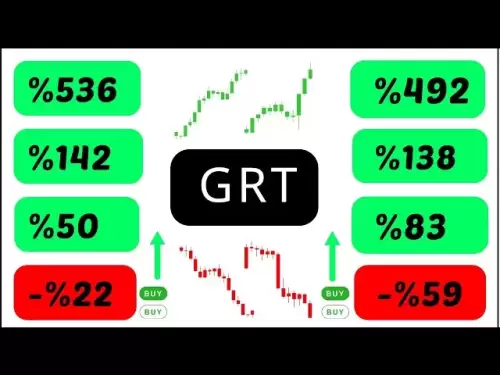-
 Bitcoin
Bitcoin $107,454.7847
1.19% -
 Ethereum
Ethereum $2,421.0131
-1.19% -
 Tether USDt
Tether USDt $1.0005
-0.01% -
 XRP
XRP $2.1909
-0.06% -
 BNB
BNB $647.4681
0.50% -
 Solana
Solana $143.9729
-1.26% -
 USDC
USDC $0.9999
-0.02% -
 TRON
TRON $0.2736
0.00% -
 Dogecoin
Dogecoin $0.1649
-0.53% -
 Cardano
Cardano $0.5681
-3.34% -
 Hyperliquid
Hyperliquid $36.9593
-1.58% -
 Bitcoin Cash
Bitcoin Cash $487.1001
6.43% -
 Sui
Sui $2.7339
-2.37% -
 Chainlink
Chainlink $13.1575
-1.76% -
 UNUS SED LEO
UNUS SED LEO $9.0019
0.00% -
 Stellar
Stellar $0.2422
-2.71% -
 Avalanche
Avalanche $17.5879
-3.60% -
 Toncoin
Toncoin $2.8373
-2.35% -
 Shiba Inu
Shiba Inu $0.0...01166
-0.38% -
 Litecoin
Litecoin $84.9356
0.11% -
 Hedera
Hedera $0.1505
-2.44% -
 Monero
Monero $310.9166
-1.23% -
 Ethena USDe
Ethena USDe $1.0003
-0.03% -
 Dai
Dai $0.9999
-0.02% -
 Polkadot
Polkadot $3.3571
-2.28% -
 Bitget Token
Bitget Token $4.4319
2.83% -
 Pi
Pi $0.6300
15.55% -
 Uniswap
Uniswap $6.9817
-1.13% -
 Pepe
Pepe $0.0...09482
-5.72% -
 Aave
Aave $256.4699
-2.85%
Is the long Yin followed by a shrinking cross star in a downward trend a downward relay?
A long Yin candlestick followed by a shrinking cross star in a downtrend often signals a bearish continuation, known as a downward relay, indicating bears may soon resume control after a brief pause.
Jun 26, 2025 at 02:21 am

Understanding the Long Yin Candlestick Pattern
In technical analysis, the long Yin candlestick pattern is a bearish signal that typically appears during a downtrend. It features a long red (or black) body with little to no upper or lower shadows, indicating strong selling pressure throughout the trading session. This pattern reflects intense bear dominance, often leading traders to anticipate further declines in price.
The formation of a long Yin occurs when sellers push prices significantly lower from the opening level and maintain control until the close. Traders interpret this as a continuation signal in an already bearish market environment. However, when followed by another specific candlestick formation, such as a shrinking cross star, it may alter the interpretation.
What Is a Shrinking Cross Star?
A shrinking cross star refers to a small-bodied candlestick with roughly equal-length upper and lower shadows. This pattern usually indicates indecision or a temporary pause in the ongoing trend. When it appears after a strong bearish move like a long Yin, it may suggest that the selling momentum is weakening momentarily.
The term "shrinking" implies that the range of the candle is smaller than the previous candles, especially the large bearish one before it. The cross star can resemble a doji, which is known for signaling potential reversals or consolidation phases. Its appearance following a long Yin raises questions about whether the trend is pausing or merely gathering strength for a deeper decline.
Analyzing the Sequence: Long Yin Followed by Shrinking Cross Star
When a long Yin is immediately followed by a shrinking cross star in a downtrend, traders often look for clues regarding the next directional bias. In many cases, this combination is interpreted as a bearish continuation pattern, also known as a downward relay.
- The long Yin reaffirms the bearish sentiment.
- The shrinking cross star represents a brief period of hesitation or profit-taking among sellers.
- Volume during the cross star phase is often low, suggesting that bears are not fully exiting their positions.
This setup allows bears to consolidate before resuming the downward movement. The shrinking cross star acts as a rest period before the next leg down, hence the term downward relay.
Identifying the Downward Relay Signal
To confirm whether the long Yin followed by a shrinking cross star is indeed a downward relay, several conditions should be met:
- The prior trend must clearly be bearish.
- The long Yin candle should occur within the context of active selling.
- The shrinking cross star should not break above the midpoint of the previous long Yin candle.
- Ideally, the volume on the cross star should be lower than the volume during the long Yin.
If these criteria are satisfied, traders may consider shorting opportunities once the next candle closes below the low of the shrinking cross star. This confirms the resumption of the bearish trend.
Trading Strategy Based on This Pattern
For traders looking to capitalize on the long Yin followed by a shrinking cross star as a downward relay, here's a step-by-step approach:
- Identify a clear downtrend in the cryptocurrency chart you're analyzing.
- Look for a long Yin candle that continues the existing bearish momentum.
- Confirm that the subsequent candle is a shrinking cross star with minimal body and balanced shadows.
- Ensure that the shrinking cross star does not engulf more than 50% of the long Yin’s body.
- Place a sell order slightly below the low of the shrinking cross star.
- Set a stop-loss just above the high of the shrinking cross star.
- Target a risk-reward ratio of at least 1:2 based on your entry point.
This strategy works best on higher timeframes such as the 4-hour or daily charts, where candlestick signals tend to be more reliable due to reduced noise and increased institutional participation.
Common Misinterpretations and Pitfalls
One common mistake is interpreting any shrinking cross star following a bearish candle as a downward relay without considering the broader trend or volume dynamics. If the shrinking cross star forms near key support levels or after an extended downtrend, it could indicate exhaustion rather than continuation.
Additionally, if the next candle after the shrinking cross star breaks out significantly to the upside, it invalidates the downward relay assumption. Traders should always wait for confirmation through the next candle’s direction and volume before taking action.
Another pitfall is failing to assess the context of the long Yin. If the long Yin follows a sharp rally and appears at resistance, it may represent a reversal rather than a continuation. Therefore, proper chart context is essential.
Frequently Asked Questions
Q: Can the long Yin followed by a shrinking cross star appear in uptrends?
Yes, although it's less common. In an uptrend, this pattern might signal a temporary pullback or consolidation but doesn't necessarily mean a reversal unless confirmed by additional bearish signals.
Q: How reliable is the downward relay pattern in crypto markets?
While candlestick patterns like the downward relay offer useful insights, crypto markets are highly volatile and influenced by external news and macroeconomic factors. Combining this pattern with volume analysis and other indicators improves its reliability.
Q: What timeframes work best for identifying this pattern?
Higher timeframes such as the 4-hour and daily charts provide clearer and more actionable downward relay setups. Lower timeframes like 15-minute or 30-minute charts tend to produce more false signals due to increased volatility.
Q: Are there variations of the shrinking cross star that still qualify for this pattern?
Yes, variations such as the standard doji, four-price doji, or even a spinning top with a tiny real body can serve as valid shrinking cross stars, provided they meet the contextual requirements of appearing after a long Yin in a downtrend.
Disclaimer:info@kdj.com
The information provided is not trading advice. kdj.com does not assume any responsibility for any investments made based on the information provided in this article. Cryptocurrencies are highly volatile and it is highly recommended that you invest with caution after thorough research!
If you believe that the content used on this website infringes your copyright, please contact us immediately (info@kdj.com) and we will delete it promptly.
- Tokenization Takes Flight: Cross-Border Transactions Soar to New Heights
- 2025-06-26 08:30:12
- Bittensor (TAO) Price: Demand Zone in Focus as Institutional Interest Heats Up
- 2025-06-26 06:50:12
- Arctic Pablo Coin, Pudgy Penguins, and Crypto Investment: Navigating the Hype
- 2025-06-26 06:27:13
- Melania Trump Token: Price Dump and Team Cashout Raises Eyebrows
- 2025-06-26 07:06:07
- AMP Crypto, Whale Buy, Token Boom: Decoding the Latest Trends
- 2025-06-26 07:25:13
- Trump, Meme Coins, and Crypto Regulation: A New York Minute on the Wild West of Digital Finance
- 2025-06-26 07:25:13
Related knowledge
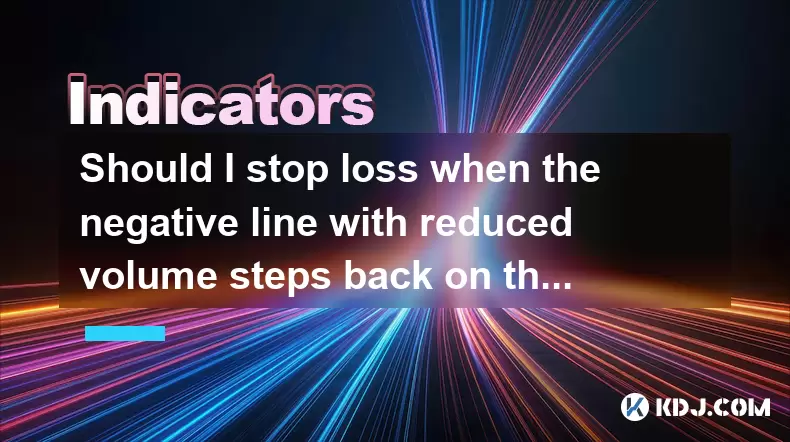
Should I stop loss when the negative line with reduced volume steps back on the 10-day line?
Jun 26,2025 at 05:42am
Understanding the 10-Day Moving Average in Cryptocurrency TradingIn cryptocurrency trading, the 10-day moving average is a short-term technical indicator used by traders to assess price momentum and potential reversals. It represents the average closing price of an asset over the last 10 days and helps smooth out price volatility. When prices approach o...
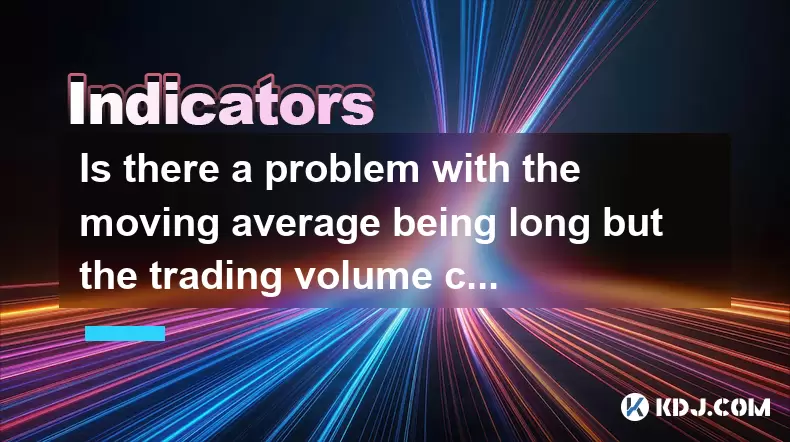
Is there a problem with the moving average being long but the trading volume continues to decline?
Jun 26,2025 at 02:42am
Understanding the Concept of Moving Averages in Cryptocurrency TradingIn cryptocurrency trading, moving averages are one of the most commonly used technical indicators. They help traders identify trends by smoothing out price data over a specific period. When the moving average is described as 'long,' it typically refers to longer timeframes such as the...
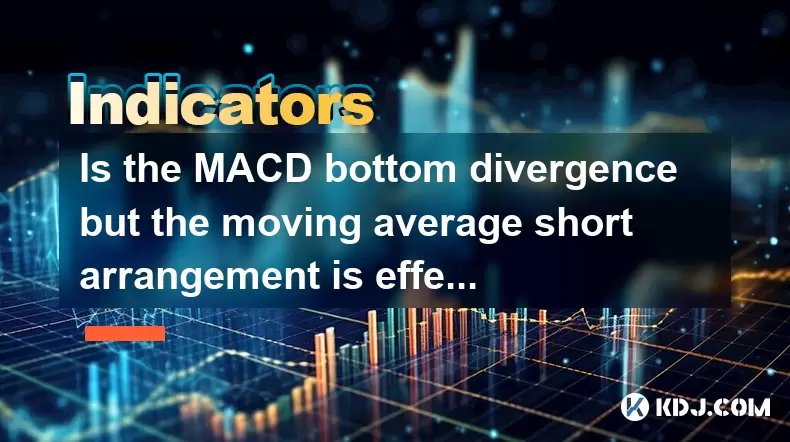
Is the MACD bottom divergence but the moving average short arrangement is effective?
Jun 26,2025 at 02:01am
Understanding MACD Bottom DivergenceMACD bottom divergence is a technical analysis concept used to identify potential trend reversals in cryptocurrency price charts. When the price makes a lower low, but the MACD line forms a higher low, it suggests that downward momentum is weakening, potentially signaling a bullish reversal. In the context of cryptocu...
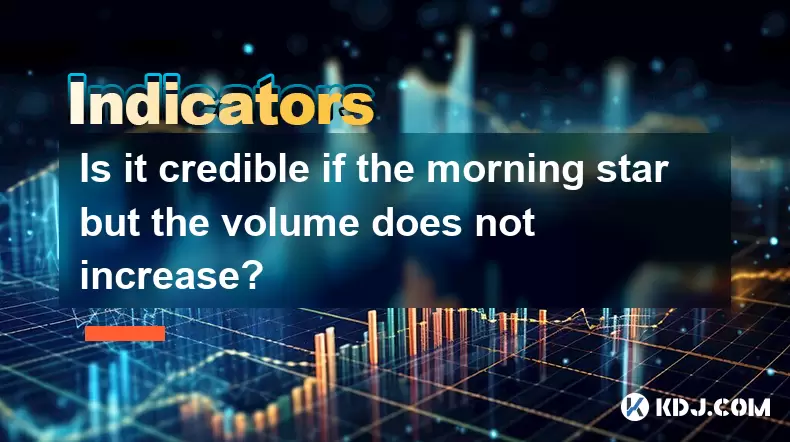
Is it credible if the morning star but the volume does not increase?
Jun 26,2025 at 08:22am
Understanding the Morning Star Candlestick PatternThe morning star is a popular candlestick pattern used by traders to identify potential reversals in a downtrend. It consists of three candles: a large bearish candle, followed by a small-bodied candle (often a doji or spinning top), and then a large bullish candle that closes within the range of the fir...
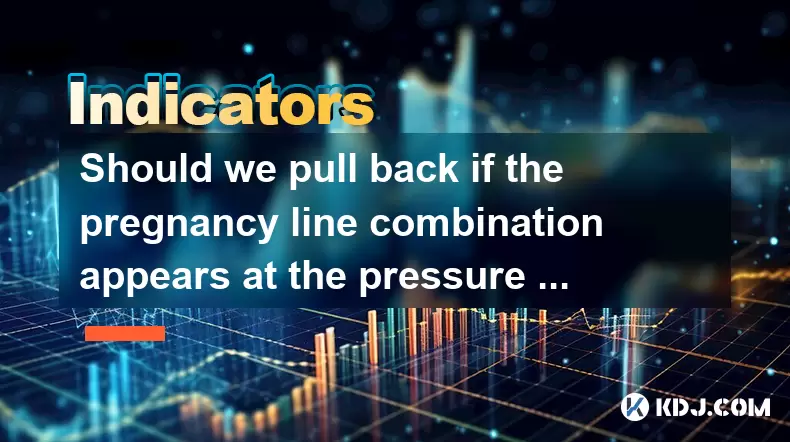
Should we pull back if the pregnancy line combination appears at the pressure level?
Jun 26,2025 at 03:00am
Understanding the Pregnancy Line in Technical AnalysisThe pregnancy line, also known as the Harami pattern, is a significant candlestick formation used by traders to identify potential reversals or continuations in price trends. This pattern consists of two candles: the first being a large-bodied candle, and the second a smaller-bodied candle that is co...

Can we buy the bottom when the volume is reduced and the price is pulled back to the support level?
Jun 26,2025 at 02:15am
Understanding the Concept of Buying the BottomThe idea of buying the bottom refers to entering a trade at what appears to be the lowest point in a price decline. In the context of cryptocurrency trading, this often involves analyzing support levels, price pullbacks, and volume behavior to identify potential reversal points. Traders seek to purchase asse...

Should I stop loss when the negative line with reduced volume steps back on the 10-day line?
Jun 26,2025 at 05:42am
Understanding the 10-Day Moving Average in Cryptocurrency TradingIn cryptocurrency trading, the 10-day moving average is a short-term technical indicator used by traders to assess price momentum and potential reversals. It represents the average closing price of an asset over the last 10 days and helps smooth out price volatility. When prices approach o...

Is there a problem with the moving average being long but the trading volume continues to decline?
Jun 26,2025 at 02:42am
Understanding the Concept of Moving Averages in Cryptocurrency TradingIn cryptocurrency trading, moving averages are one of the most commonly used technical indicators. They help traders identify trends by smoothing out price data over a specific period. When the moving average is described as 'long,' it typically refers to longer timeframes such as the...

Is the MACD bottom divergence but the moving average short arrangement is effective?
Jun 26,2025 at 02:01am
Understanding MACD Bottom DivergenceMACD bottom divergence is a technical analysis concept used to identify potential trend reversals in cryptocurrency price charts. When the price makes a lower low, but the MACD line forms a higher low, it suggests that downward momentum is weakening, potentially signaling a bullish reversal. In the context of cryptocu...

Is it credible if the morning star but the volume does not increase?
Jun 26,2025 at 08:22am
Understanding the Morning Star Candlestick PatternThe morning star is a popular candlestick pattern used by traders to identify potential reversals in a downtrend. It consists of three candles: a large bearish candle, followed by a small-bodied candle (often a doji or spinning top), and then a large bullish candle that closes within the range of the fir...

Should we pull back if the pregnancy line combination appears at the pressure level?
Jun 26,2025 at 03:00am
Understanding the Pregnancy Line in Technical AnalysisThe pregnancy line, also known as the Harami pattern, is a significant candlestick formation used by traders to identify potential reversals or continuations in price trends. This pattern consists of two candles: the first being a large-bodied candle, and the second a smaller-bodied candle that is co...

Can we buy the bottom when the volume is reduced and the price is pulled back to the support level?
Jun 26,2025 at 02:15am
Understanding the Concept of Buying the BottomThe idea of buying the bottom refers to entering a trade at what appears to be the lowest point in a price decline. In the context of cryptocurrency trading, this often involves analyzing support levels, price pullbacks, and volume behavior to identify potential reversal points. Traders seek to purchase asse...
See all articles























